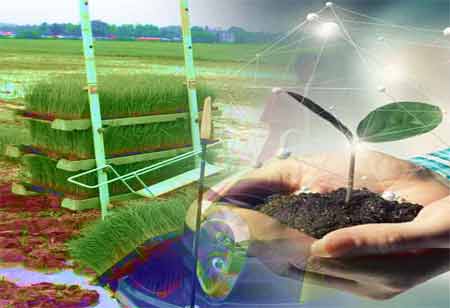Thank you for Subscribing to Energy Business Review Weekly Brief
Impact of Energy Infrastructure and its Awareness
Understanding the impacts of energy infrastructure is more critical now than ever, yet our collective awareness of these impacts appears surprisingly limited.

By
Energy Business Review | Monday, May 20, 2024
Stay ahead of the industry with exclusive feature stories on the top companies, expert insights and the latest news delivered straight to your inbox. Subscribe today.
For a sustainable future, it is essential to comprehend the effects of energy infrastructure. Increasing awareness and having educated conversations can optimize positive effects and reduce negative ones.
FREMONT, CA: Understanding the impacts of energy infrastructure is more critical now than ever, yet our collective awareness of these impacts appears surprisingly limited. Energy infrastructure, encompassing everything from power plants and renewable energy farms to transmission lines and beyond, plays a pivotal role in modern society. It powers our homes, fuels our industries, and sustains our way of life. However, these infrastructures' environmental, social, and economic implications are vast and complex, often extending far beyond the immediate vicinity of the facilities themselves.
Firstly, the environmental impact of traditional energy infrastructure cannot be overstated. Fossil fuel-based power plants, for example, are among the largest sources of carbon dioxide emissions globally, contributing significantly to climate change. Additionally, the extraction processes associated with coal, oil, and natural gas can lead to land degradation, water pollution, and biodiversity loss. Even renewable energy sources, often touted as clean alternatives, have environmental challenges. Hydroelectric dams, while providing substantial renewable energy, can disrupt local ecosystems and displace communities. Wind farms and solar panels also have footprints, requiring large areas of land or sea, which can impact local wildlife and habitats.
Social impacts are equally significant but are frequently overlooked or underestimated. Energy projects can lead to community displacement, particularly in large-scale projects like dams or the extraction of resources. This displacement not only disrupts lives but can also erase cultural heritage and affect the social fabric of entire communities. Furthermore, the benefits of energy infrastructure, such as employment opportunities and improved access to energy, are not always equitably distributed. Often, the communities bearing the brunt of the environmental and social costs do not reap the benefits.
The economic implications of energy infrastructure are both positive and negative. On the one hand, investments in energy infrastructure can stimulate economic growth, create jobs, and improve energy access, catalyzing further development. On the other hand, the reliance on fossil fuels can tie economies to volatile global markets, and the costs associated with environmental degradation and health impacts from pollution can be substantial. Transitioning to renewable energy sources presents a solution to some of these issues. Still, it requires significant upfront investment and poses economic challenges during the transition period.
Despite these far-reaching impacts, public awareness and understanding of the complexities associated with energy infrastructure remain limited. The lack of awareness can be attributed to several factors. For one, the technical nature of energy systems and their impacts can be challenging for the general public to comprehend. Additionally, the effects of energy infrastructure are often gradual and dispersed, making them less visible and immediate to those not directly affected. Moreover, there is a tendency for discussions around energy to focus on prices and availability, overshadowing the broader environmental, social, and economic considerations.
Fostering a more informed and engaged public discourse on energy infrastructure is imperative to address these challenges. This involves raising awareness about the negative impacts and highlighting the opportunities for sustainable development by adopting cleaner, more equitable energy systems. Education and outreach programs, transparent decision-making processes, and meaningful public participation in energy planning can all contribute to a more informed and empowered public.






